This is a fabulously delicious brined pork belly that can be SIMPLY roasted in the oven instead of cooking for a long time on the stove. Enjoy this with your Korean Bossam or just simply in ssam!
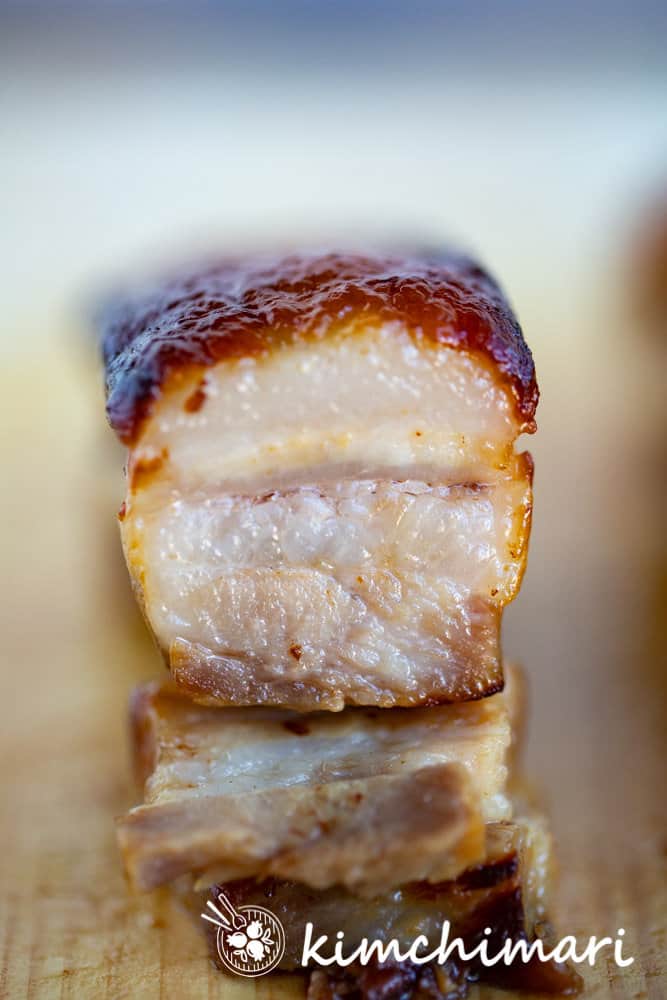
Oven Rosted Korean Pork Belly that’s brined!
Did you know that the traditional Korean kitchen doesn’t have an oven? If you think about it, everything in Korean cooking is either boiled, simmered, steamed, grilled, blanched, pan-fried, deep-fried or fermented (did I forget anything? let me know if I did!) but there’s nothing that’s baked in the oven.
But having lived in the US and and having cooked a lot of western style, oven baked dishes, I know how great oven cooking is – as you can ‘set it and forget it (well kind of anyway..)’.
Korean Pork Belly (Samgyeopsal 삼겹살) is often cooked in 2 ways – sliced thin and grilled on the pan as Samgyeopsal Gui OR boiled in water with various seasonings then sliced to be served with Bossam or in our family, with Naengmyeon (cold noodle soup). And I found this brined, oven-roasted pork belly recipe can totally substitute any boiled samgyeopsal in Korean dishes.
So enjoy this in Bossam, Ssam or with Naengmyeon!
BTW, I need to give credit to the the idea for this recipe nephew’s wife – Eunhyang. I was so pleasantly surprised by how tender and juicy it came out while having a wonderful browned caramelized crust! Since then I have made it several times and mostly had it in my Ssam. Here’s a snapshot of what I would do – some greens, ssamjang, saewoojeot and garlic slivers.
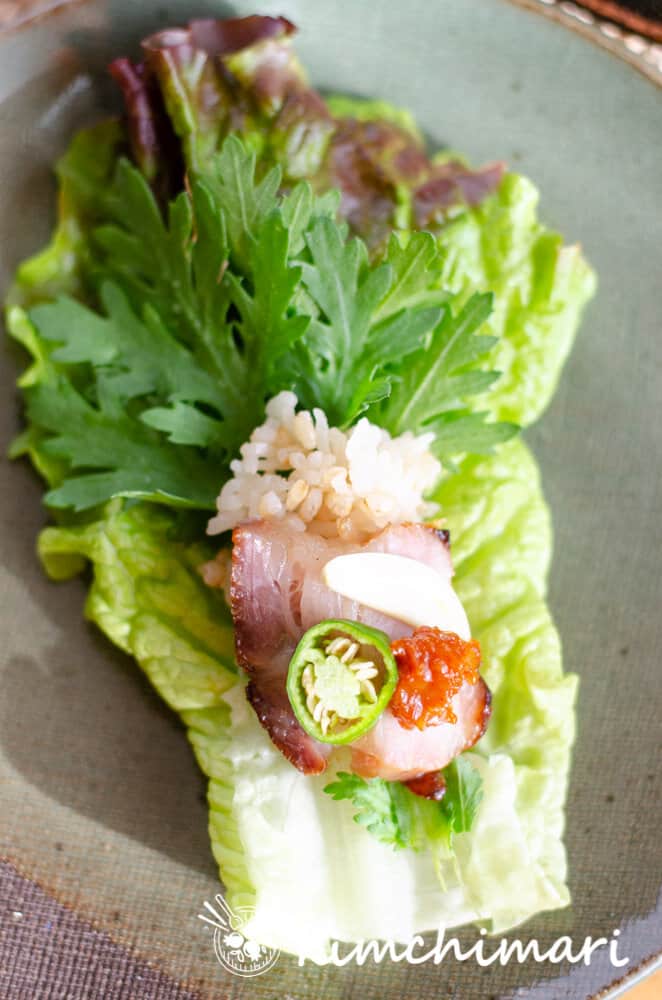
Also, last weekend, I invited a couple and did a Bossam dinner and they loved it so it works really well with Bossam too.
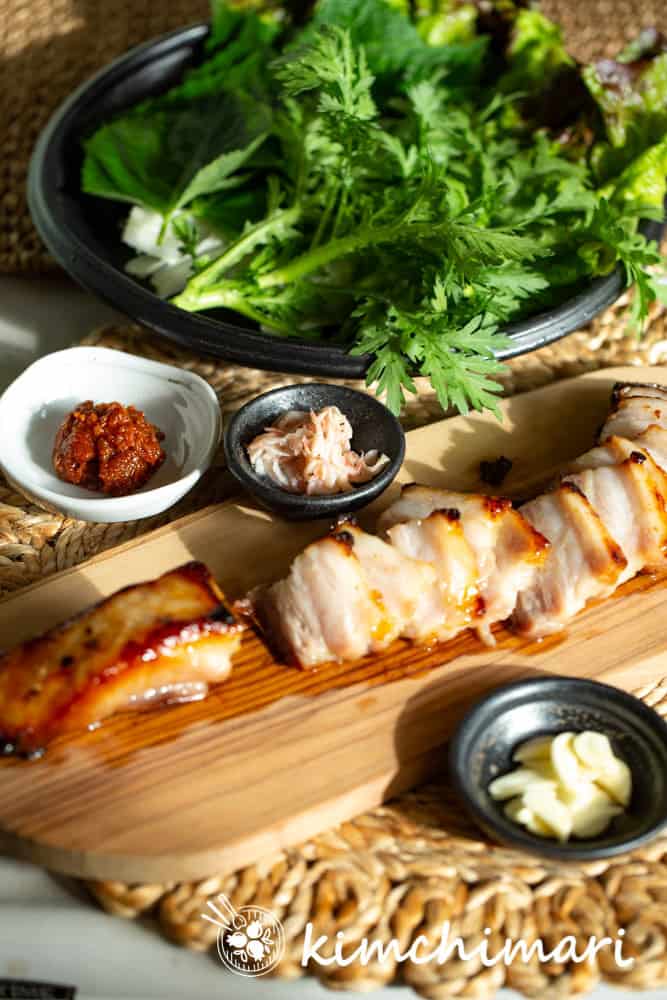
Ingredients for Oven Roasted Korean Pork Belly
- 1 lb pork belly (read more below)
- 1/3 cup water
- 1/2 cup Korean rice syrup (Jocheong 조청) – substitute with about 6 Tbs honey + 2 Tbs water mixed for 1/2 cup rice syrup.
- 2 Tbs sea salt
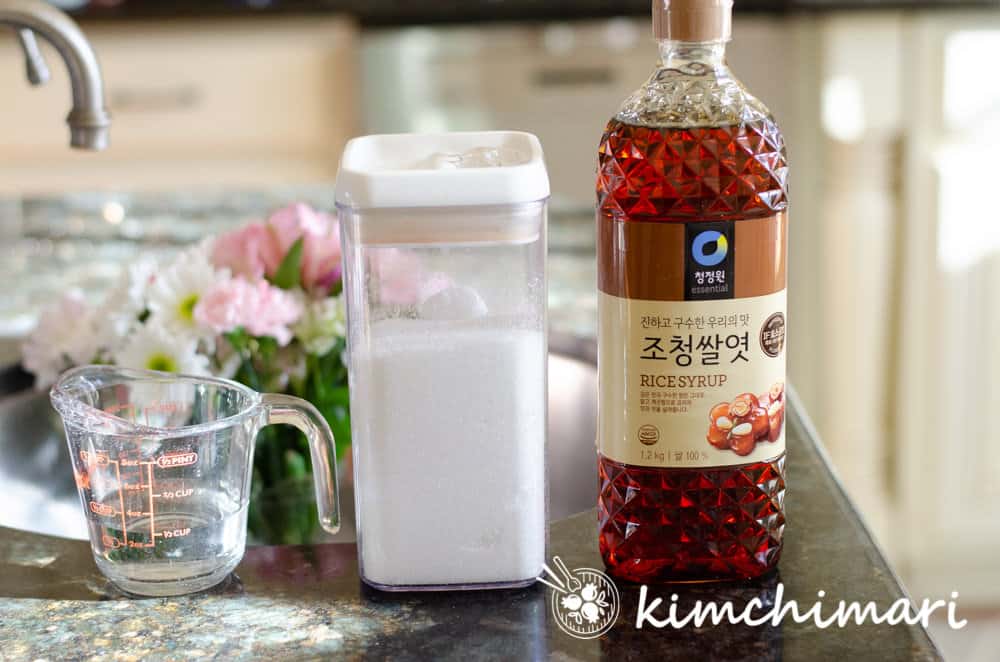
What kind of Pork Belly cut works best?
For this recipe, very thick 2-3 inch wide Skin-On Pork Belly cuts from the butcher or from the Korean market will work best. However, if you don’t like the skin, you can also use skinless cuts but they won’t come out as glorious looking as the ones with the skin.
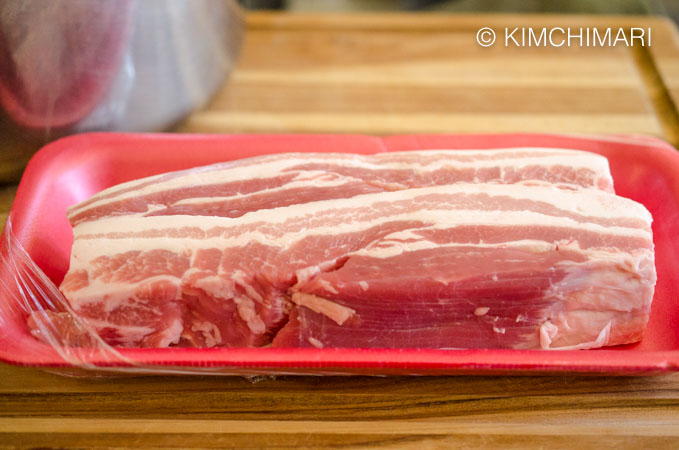
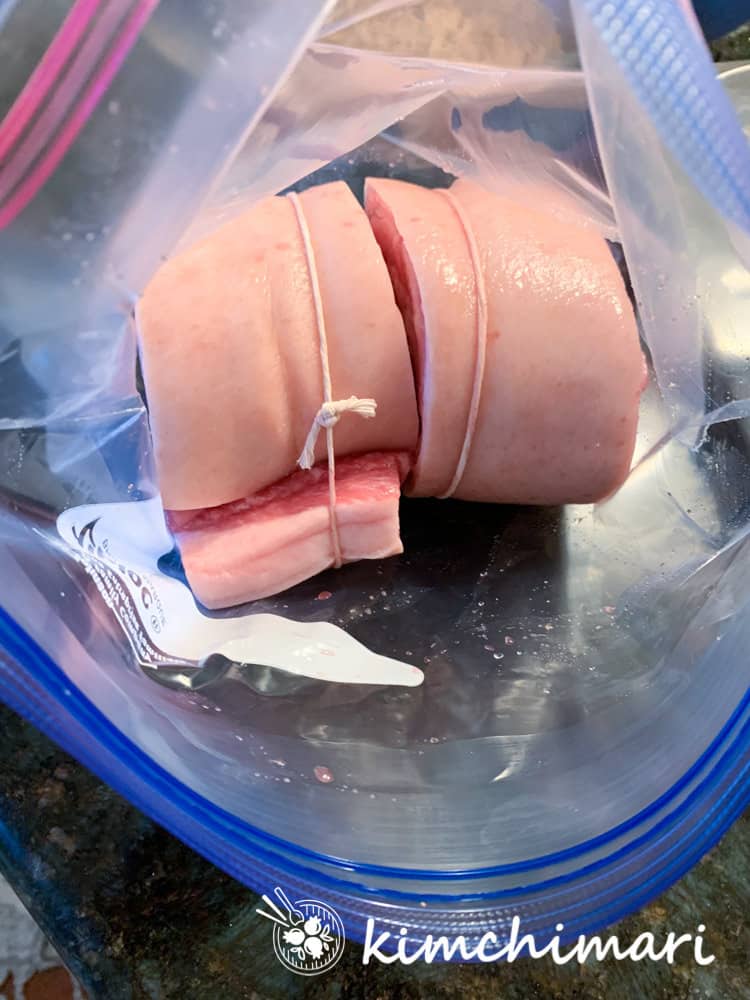
what is Korean rice Syrup (Jocheong 조청)?
Korean Rice Syrup (Jocheong) may be an ingredient that may puzzle you a bit if you are not used to cooking Korean food. You can read more about it here in my Korean Ingredient Glossary. Jocheong is made simply with cooked rice broken down by the enzymes in malted barley powder and then cooked to reduce into syrup. Koreans didn’t have sugar hundreds of years ago so Jocheong or honey was used mainly to sweeten the food. use Jocheong to make many traditional sweets and cookies like Yakgwa. It is also used when making Gochujang
Korean Rice Syrup is less sweet than honey or maple syrup. Korean Jocheong rice syrup has about 21g of sugar for 2 Tbsp. Honey has 34g and Maple Syrup has 24g of sugars for the same amount. First of all, so this brine may feel like it may be very sweet but it’s not.
What brands of Korean rice syrup are best? I usually buy Ottogi 오뚜기 or Cheongjeongone 청정원. Whatever you buy, make sure it’s made from 100% rice and nothing else.
Substitutions – substitute honey by using about 60% of the amount and then adding water for the remaining 40% or substitute maple syrup by using about 90% of the amount and then adding water for the 10%. For example, instead of 1/2 cup rice syrup, use 5 Tbsp honey + 3 Tbsp water. If using maple syrup, use 7 Tbsp maple syrup and 1 Tbsp water.
Step-by-Step Instructions
- In a mixing bowl, add water and salt. Stir until salt is dissolved. It’s better to mix the salt and water first because if you add the syrup from the beginning, it will be much harder to dissolve all the salt.
- Add rice syrup to the brine and mix again. It should look something like above.
- Add pork belly to the brine and leave it in a plastic bag or container for at least 1 hr or up to 1 day. The above picture shows a skinless pork belly in brine. Refrigerate if you are going to leave it in brine for longer than an hour.
- When ready to cook, heat the oven to 400 ℉. Take the pork belly out of the brine and let it drain for 10 min. or so by leaving the pork belly on top of a cooling rack or in a colander. We don’t want the pork belly to be dripping of the brine because it will caramelize too much and start to burn in the oven.
- Roast in the oven for 25 – 35 min. The time will depend on the size of your pork belly piece and also if your pork belly is straight out of the fridge or if it has warmed up to room temp beforehand. The most accurate way is to use a meat thermometer and cook until the internal temperature reaches at least 145℉ up to 165℉. 145 is the minimum temp that USDA gov recommends so I would cook it more towards 160 or so – since Korean pork belly is supposed to be fully cooked.
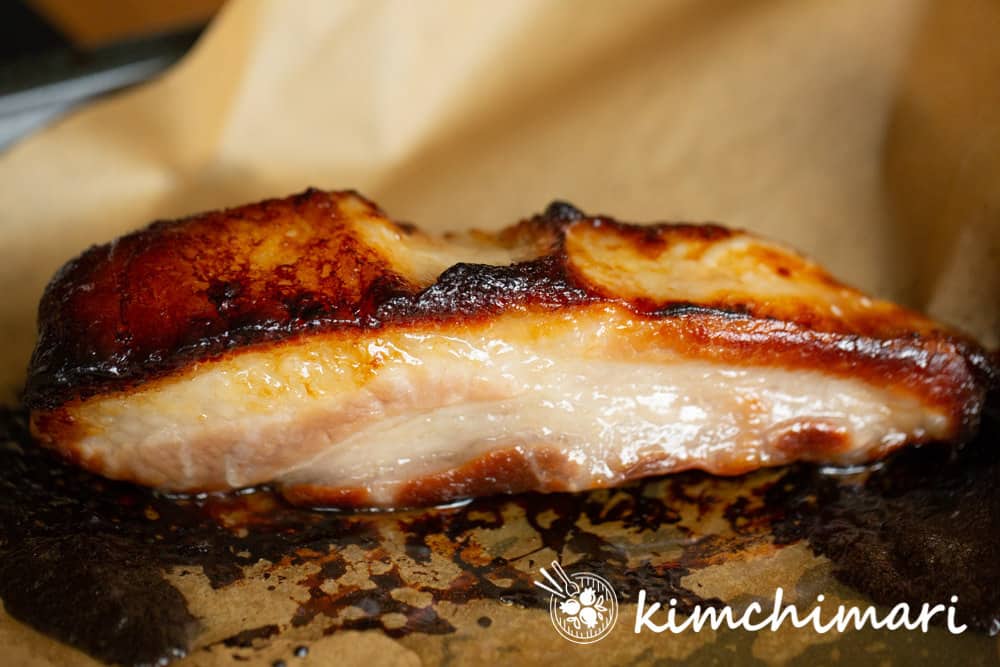
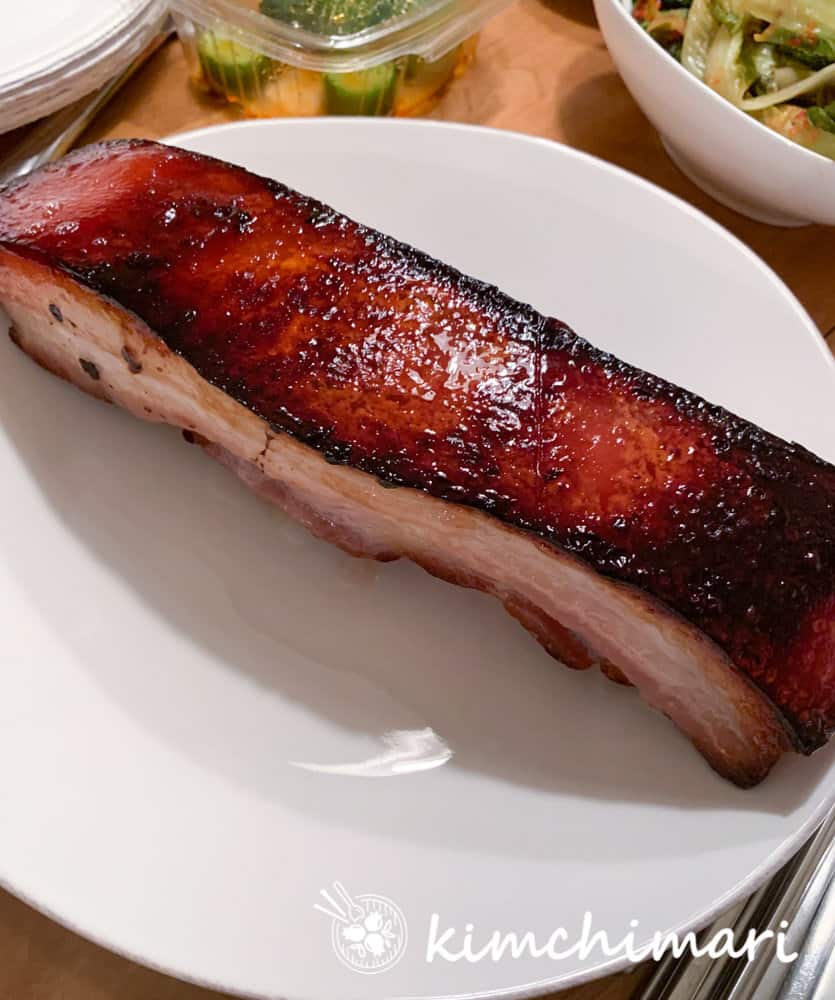
FROM JINJOO!
Tips for storage
- While the rice is cooking, keep smelling the pot to avoid the rice from burning. Adjust fire if you think it’s burning. Try NOT to open the pot while it is cooking. Korean short grain rice are different from long grain rice and don’t do well when you open the pot while it’s cooking.
- You may think the yangnyeom jang sauce is pretty bland for Korean standards but this is how Korean Temple food is. It really tries to bring out the natural flavors of the ingredients which are mushrooms in this case. So do not make the sauce too strong/spicy because it will overpower the mushroom flavor.
- You can use regular sesame oil instead of perilla seed oil. It will be less aromatic but perilla seed oil has a flavor that not everyone likes and is also not easy to get in most countries so sesame oil should work fine.
- You are welcome to use other kinds of mushrooms, but try to use a variety of flavors and textures.
- An electric rice cooker can make your life much easier but you will probably not get the same wonderful flavor.
Quick Recipe Video (3min) – no narration
Serving Suggestions
- Serve this yummy pork belly as part of your Bossam dish. Just slice them and serve it with pickled cabbage, spicy radish muchim and saewoojeot.
- Serve this with your Ssam leaves, ssamjang, and saewoojeot and rice!
- Serve this with my light green onion salad – Pa Muchim.
- A wonderful North Korean style meal is to have pork belly and Naengmyeon (cold noodle soup).
How to make Oven Roasted Korean Pork Belly VIDEO – 4 MIN NARRATED
Oven Roasted Korean Pork Belly
Ingredients
- 1 lb pork belly
- 1/3 cup water
- 1/2 cup rice syrup jocheong 조청
- 2 Tbsp sea salt (trader joe's)
Instructions
- In a mixing bowl, add water and salt. Stir until salt is fully dissolved.
- Add rice syrup to the brine and mix again. Add pork belly to the brine and leave it for at least 1 hr up to 1 day. Refrigerate if you want to leave it in brine longer than a couple of hours.
- When ready to cook, take the pork belly out of the brine and let it drain for 10 min. or so by leaving the pork belly on top of a cooling rack or in a colander. We don't want the pork belly to be dripping of the brine because it will caramelize too much and start to burn in the oven.
- Roast in 400℉ oven for 25 – 35 min. The time will vary depending on the size and temperature of your pork belly piece. If your pork belly is straight out of the fridge then you should cook longer. The most accurate way is to use a meat thermometer and cook until the internal temperature reaches at least 145℉ up to 165℉. 145 is the minimum temp that USDA recommends so I would cook it more towards 160 or so – since Korean pork belly is supposed to be fully cooked.
- Serve with ssam and ssamjang and rice or serve as Bossam with all the fixings.
Tips & Notes:
- Rice Syrup Substitute – you can use honey or maple syrup but you have to use about 25% less. So substitute 1/2 cup (8 Tbs) rice syrup with about 5 Tbs honey + 3 Tbs water
- Pork Belly – use skin-on, 2-3 inches wide pork belly cut. skinless also works
- The brine is per 1 lb weight so adjust and increase the brine based on the weight of your meat
- It may take more or less time to fully cook meat based on various factors like the temperature of the meat at the time of cooking, the thickness of your meat, etc so please check the internal temperature of the meat to make sure it’s fully cooked

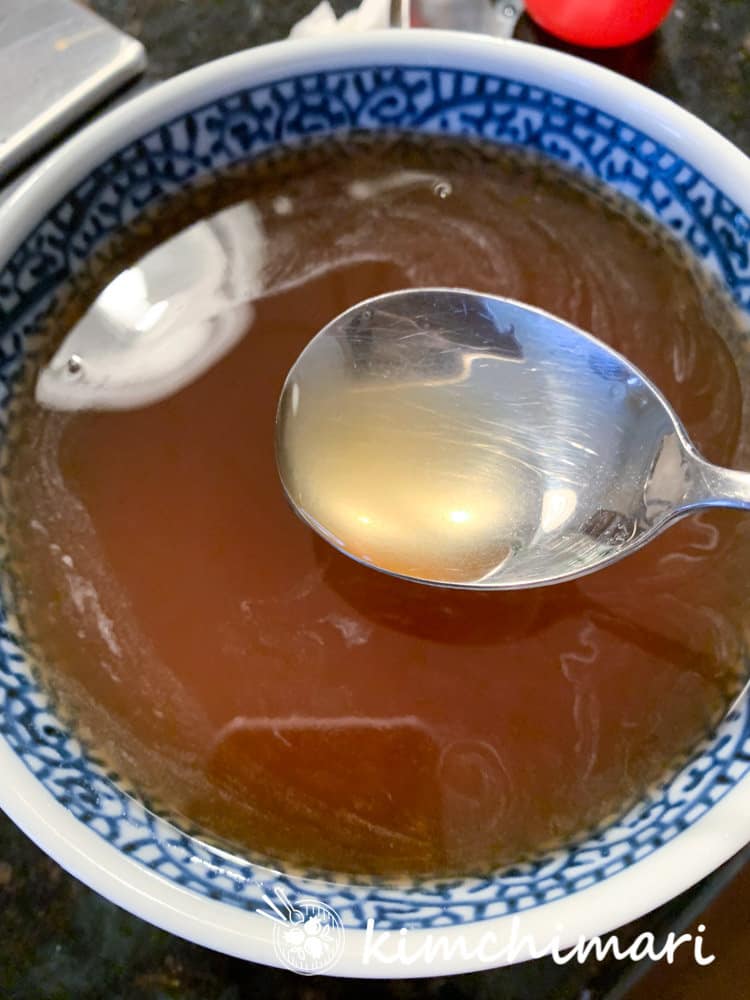
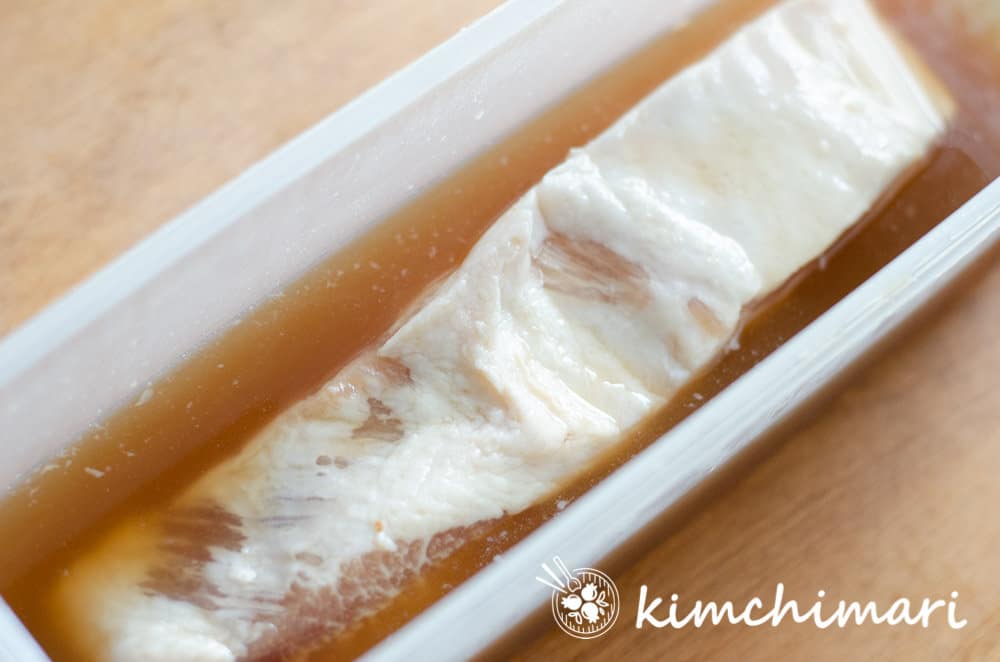
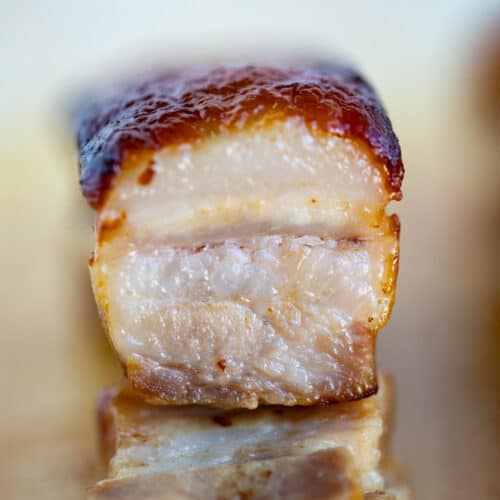
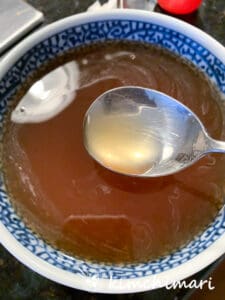
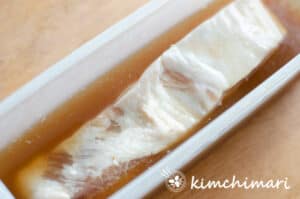
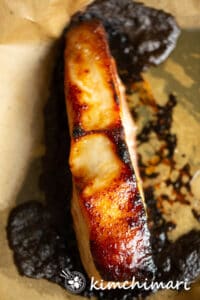
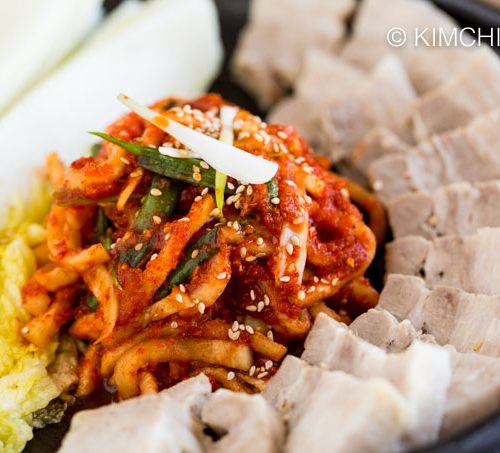
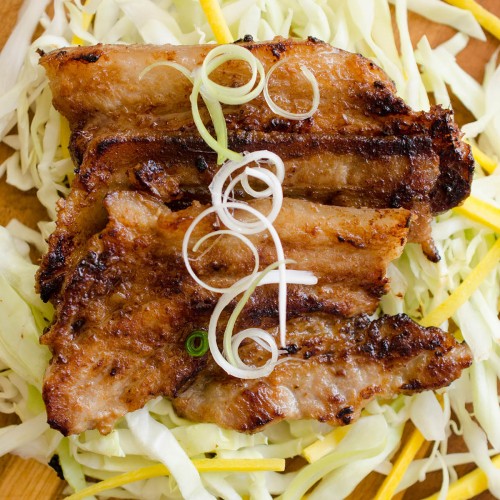
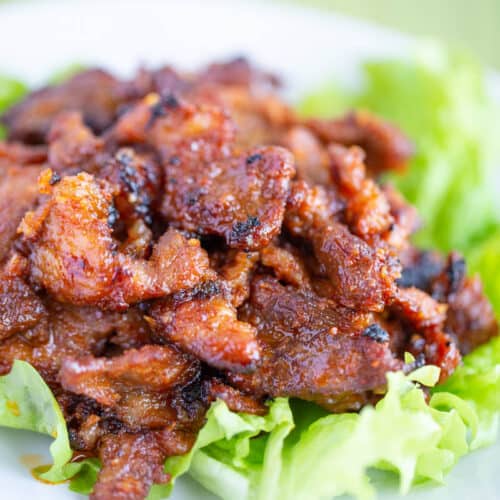
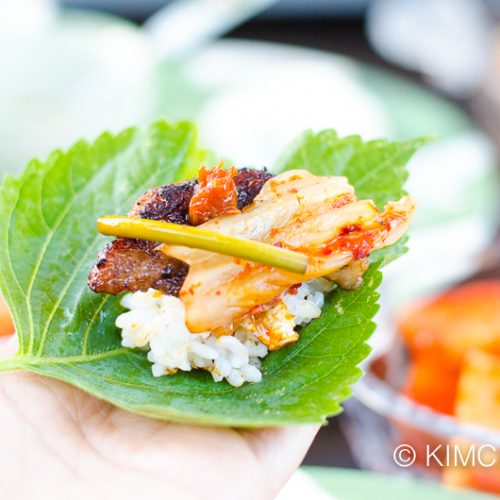
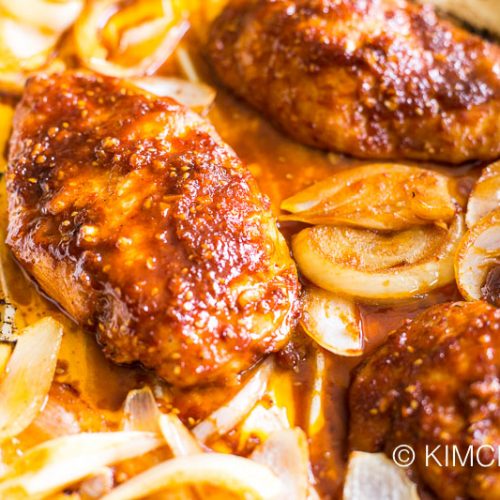
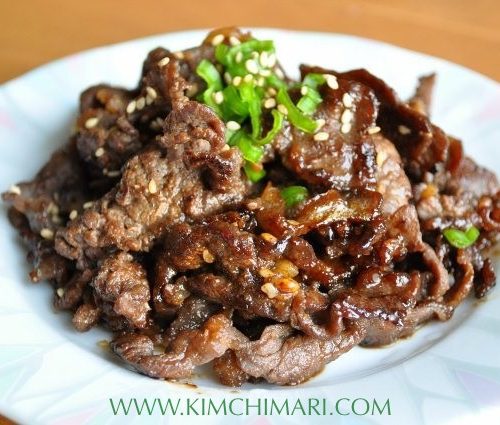
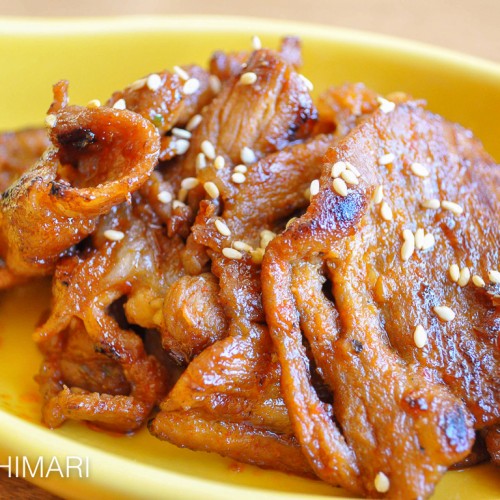
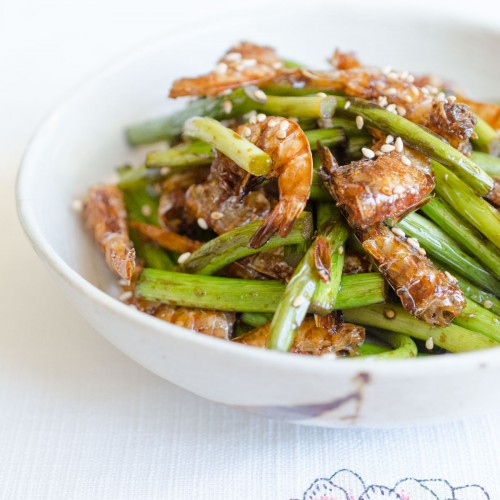
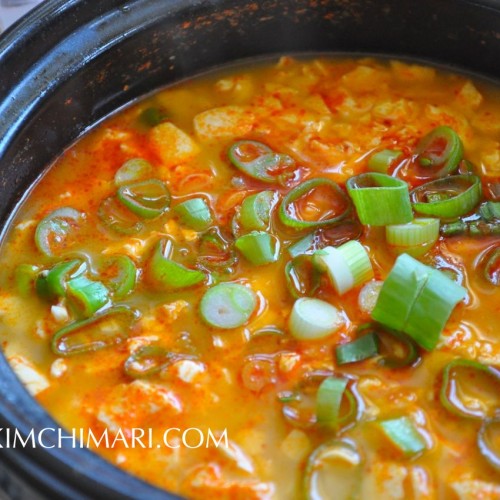
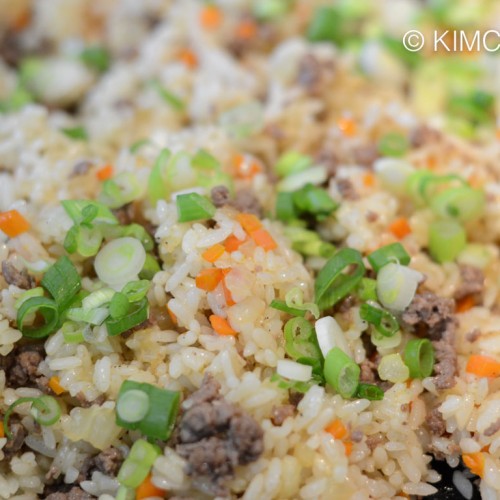
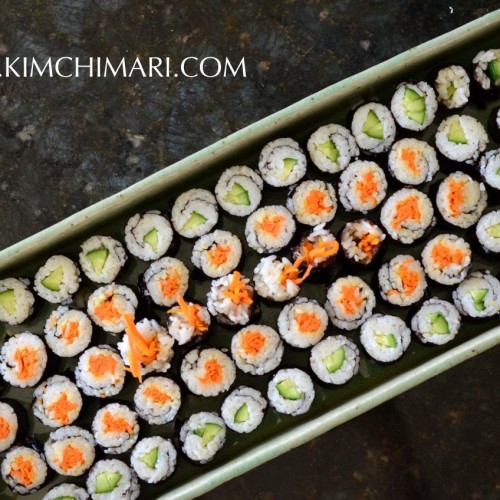
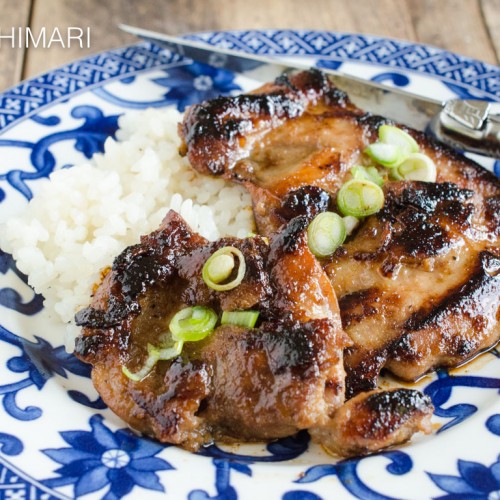








The pork came out tasting incredibly gamey, which made it hard to eat. How would I go about removing the gamey flavor?
That’s strange.. are you sure the pork was fresh? I’ve never had that problem. But if you want, you can try substituting 1/2 of the water amount with white wine or sake. You can also add some ginger too if you’d like.
This was perfect! It came out almost exactly like how the pictures showed (wish I could attach for comparison) and was so simple to follow along. I just made it tonight and it’s now my go to for cooking thick pork belly strips and for bossam. I didn’t know what to expect but I am so happy and lucky to have found your recipe. My only fault and greatest sin was not having any fresh garlic on hand to eat it with. Thanks for sharing your recipe and skills with us!
Yay!!! I’m soo happy to hear that – always so good to hear that others think the recipe is as good as I think it is! Hope you enjoy it with some fresh garlic next time!! hehe.. have a nice day!
Hi! Is this supposed to be in a baking pan? or on a rack?
You can use either – rack will drain away the fat better. Good luck!